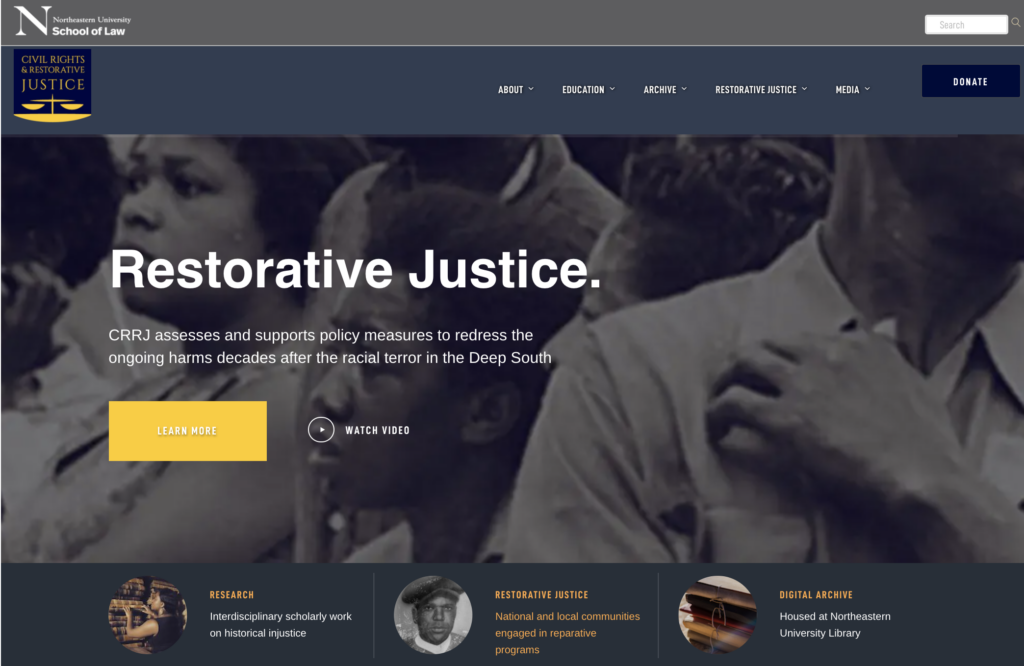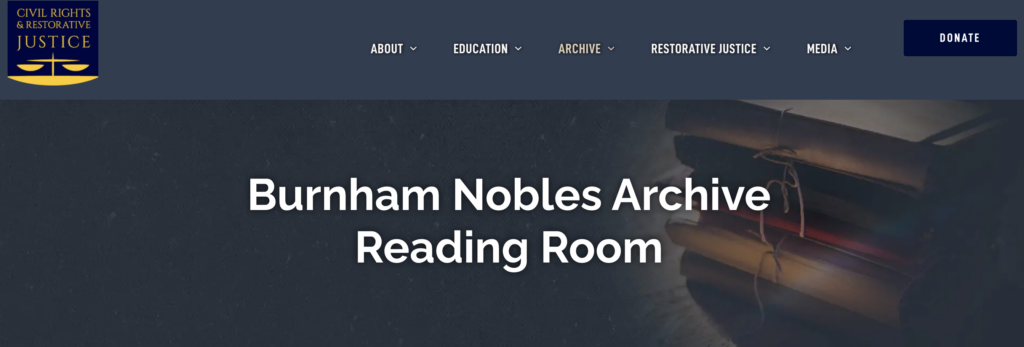CRRJ Archives Helps Bring Justice to Racially Motivated Crimes
As the broader American public has recently begun seeing the social, economic, and political impact of historical injustices in the United States, one thing has become clear—we don’t all have the same understanding of the events that brought us to this place. All too often, violence has been used to enforce boundaries on where people could live, work, and exercise their right to vote. Bringing that history to light and working toward justice for the victims of violence and their communities is imperative to achieving true equality for all.
The Civil Rights and Restorative Justice Project (CRRJ) at the Northeastern University School of Law does this work, conducting research and supporting policy initiatives on anti-civil rights violence in the United States and other miscarriages of justice during the period of 1930-1970.

CRRJ has come to serve as a resource for scholars, policymakers, and organizers involved in various initiatives seeking justice for their crimes. Since its founding in 2007, CRRJ has amassed thousands of investigative records about racial violence—death certificates, police reports, and Department of Justice and NAACP files, along with their own interviews and investigative reports. Those records reflect that hidden history, and CRRJ, in partnership with the Northeastern University Library, is taking the next step toward making this historical information available and accessible to victims’ families, researchers, and journalists through the CRRJ Burnham-Nobles Archive (BNA). Containing the records of over 1,100 violent incidents, the BNA is centered on record-keeping as accountability for past racial violence and its ongoing effects today.

The Civil Rights and Restorative Justice Project Burnham-Nobles Archive consists of two main parts: a collection of the evidentiary records compiled by law clinic investigators, and a database of information captured from those records, both provided to users on a dedicated website.
As you might imagine, such a larger project requires the work of many. I was hired as Project Archivist in February 2020 to help transition CRRJ’s case records from a collection of individual cases to an aggregation of information from which patterns might emerge—about the victims, circumstances of their deaths, and the justice systems which failed to bring alleged perpetrators to account. Based in the Northeastern University Archives and Special Collections (UASC), I work as the bridge between the legal staff of CRRJ and the staff in the Northeastern University Library. Being part of the UASC allows me to access the expertise of colleagues with experience with other collections and digital processes.
Alongside UASC, many NU library staff are directly involved in bringing the project to life. These include the staffs of Resource and Discovery Services and the Digital Scholarship Group, as well as staff in other departments who have contributed their expertise through consultations.
We began our work by looking backward and forward—what structures and information we have to work with, the collection as it exists in the Digital Repository Service (DRS) and within CRRJ, and what structures of CRRJ’s ongoing work and library structures we can construct which might support the archive in the future.
While we have many tangible successes we can point to, underlying all that we have accomplished is a genuine sense of collaboration and an approach to our work through the lens of CRRJ’s mission of justice and respect for the victims of racially motivated homicide.